After Domagoj Kostanjšak did an analysis of NK Osijek last week, I have decided I will do a scout report on the top goal-scorer in 1.HNL, Mirko Marić. This scout report will have both data analysis and tactical analysis on Marić’s abilities. The Osijek centre forward already has the same number of goals as last season, despite having played 8 games fewer.
Marić started his career in the Bosnian Premijer Liga at Široki Brijeg, playing there for three seasons before moving to 1.HNL champions Dinamo Zagreb from where he went on loan spells to Lokomotiva. He didn’t make any appearances for this year’s Champions League participants Dinamo Zagreb and made a move to MOL Vidi where he played for seven months before arriving at his current club. This season, his price has gone up to four million euros in December and after COVID-19 situation, it dropped to 3.2 million euros. There was a lot of talk in the summer that the Championship sides Nottingham Forrest and Birmingham City had made a bid for him, but Osijek rejected it. This summer, he could depart to a better league.
Player overview and data analysis
Mirko Marić is a 25-year-old centre-forward. He is left-footed, but still capable with his right foot too. Marić is 188cm tall, which can be his advantage in the air, but his offensive aerial duels are his weakness. He always looks to offer a passing option for his team-mates and offers more dimensions to Osijekin attack.
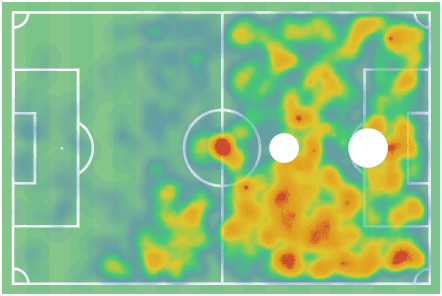
Looking at his heatmap we can see Marić likes to drift wide and drop deeper to get the ball. His football IQ helps him get into the right spots on the field to receive the ball, which means he has spatial awareness and he often looks to lay the ball off to his team-mates with the first touch. In the graph below we will take a look at Marić’s expected goal contribution and goal contribution per 90 compared to the other forwards in 1.HNL.
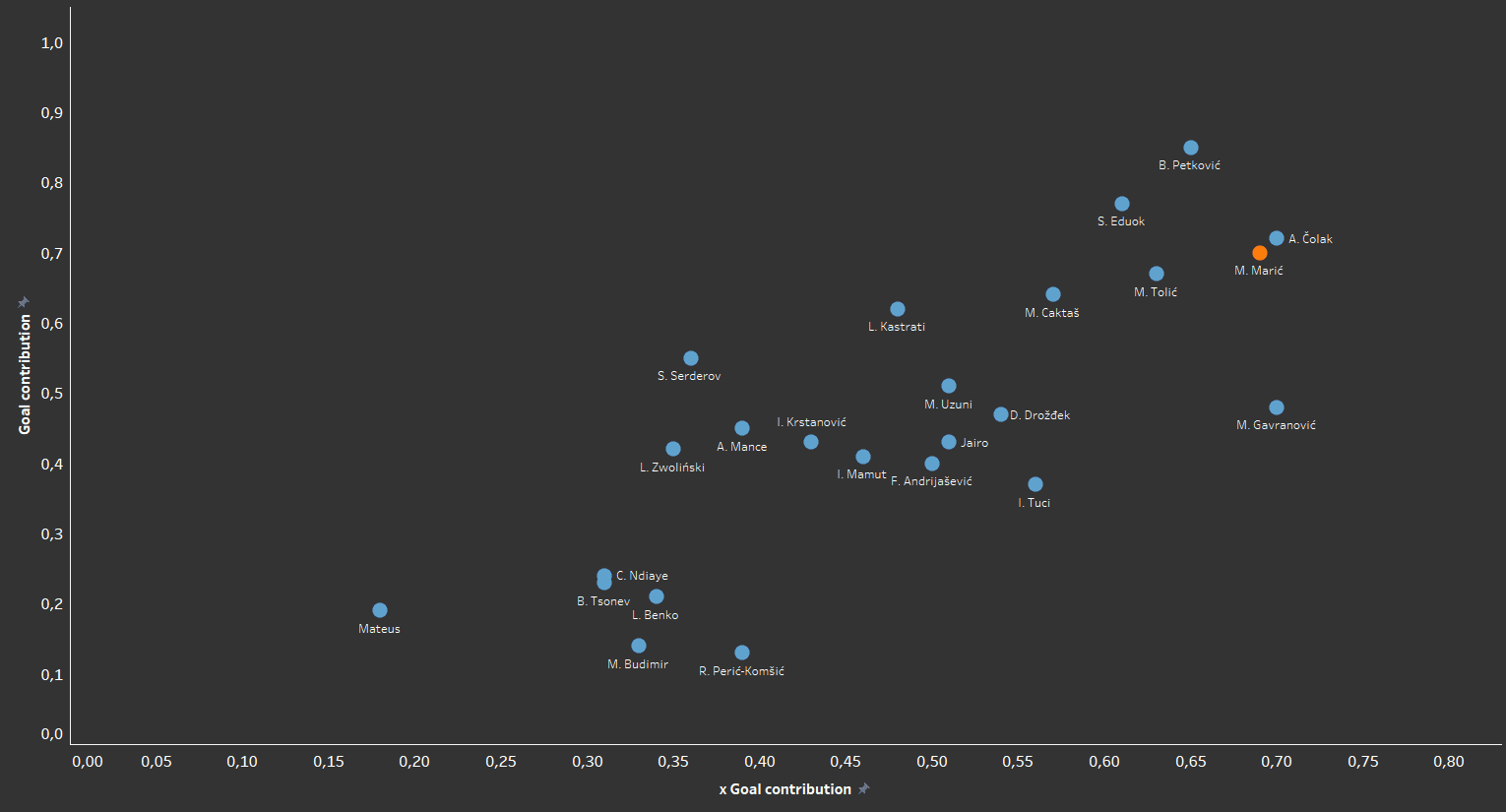
As we can see, Marić is one of the best players in both metrics, averaging 0.69 expected goal contribution while his goal contribution is 0.7 per 90. Just based on that we can assume he is a lethal finisher, but also that he can deliver a good pass to his teammates. The second graph will provide us with more information on how often Marić shoots and how often he touches the ball in the box per 90.
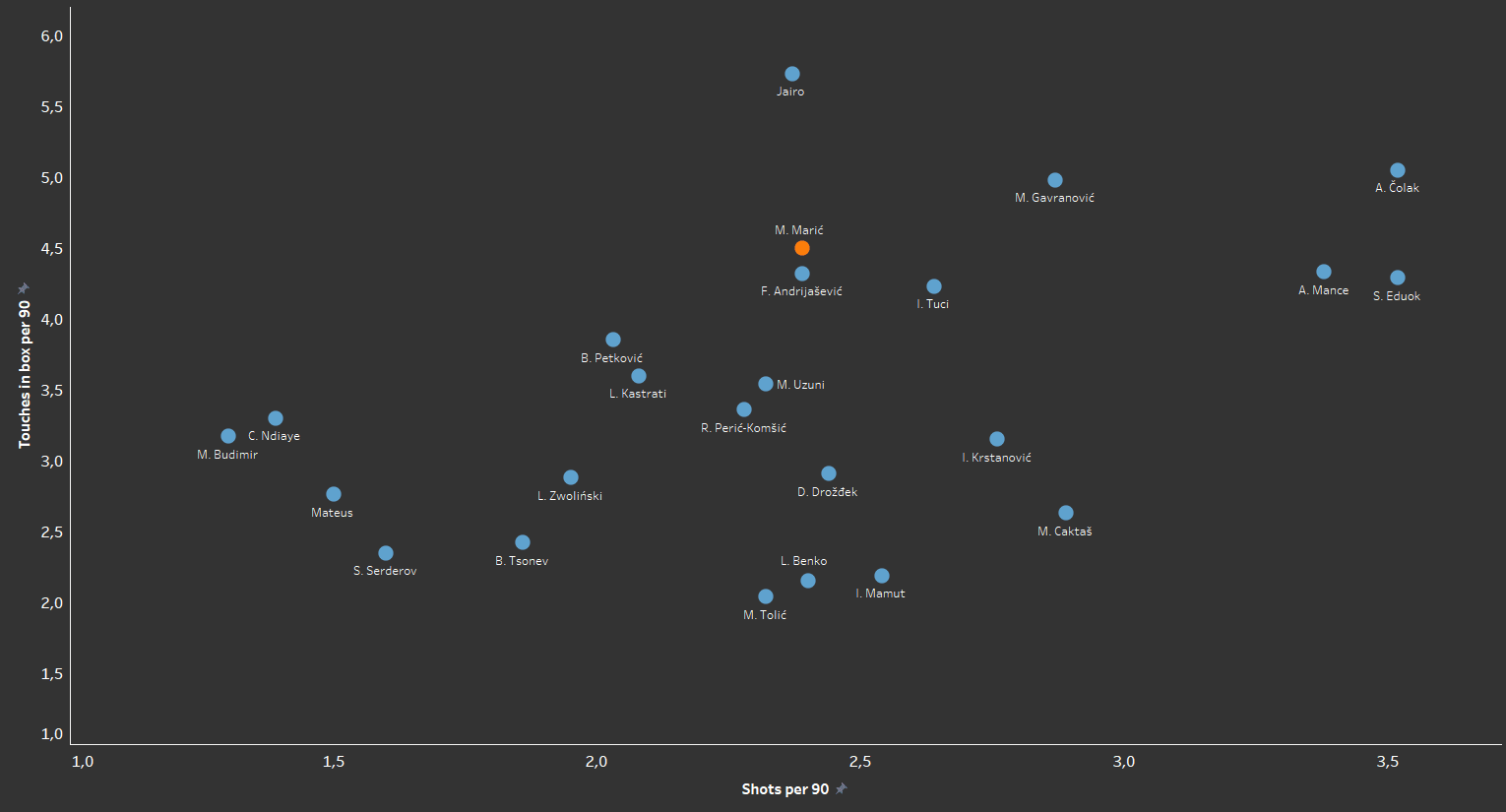
It is interesting to see that Marić is not one of the players to shoot often and yet he scores a lot and has high xG per 90. He is averaging 2.39 shots per 90 and 4.5 touches per 90. In the shot map, below we will take a look at the position of his shots this season.
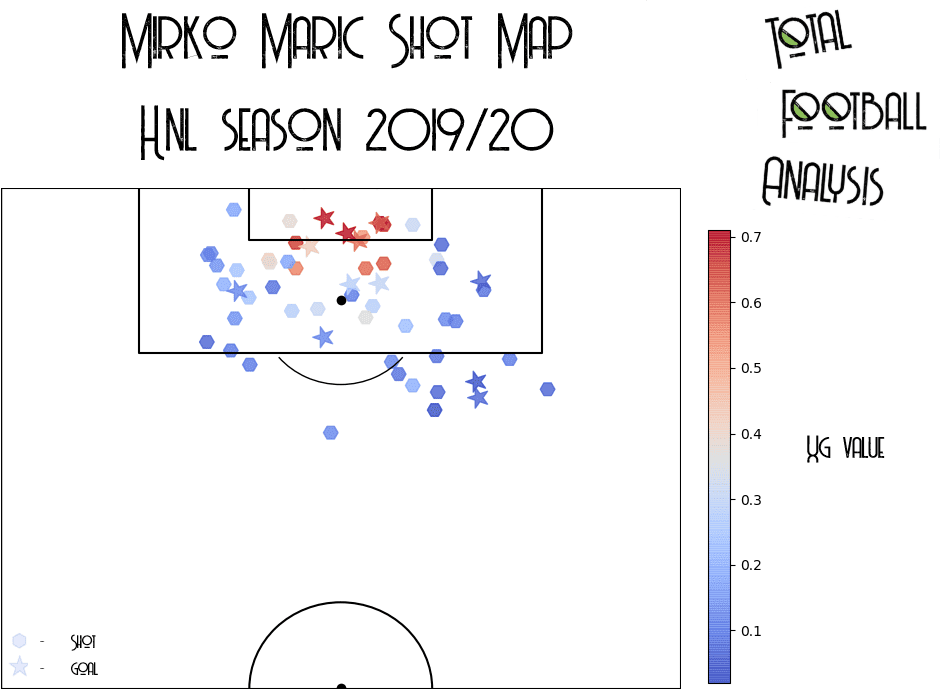
It’s also important to note that the shot map is without his penalty shots. We can see he mostly takes his shots inside the penalty area, but some are from the outside of the area too. Also, Marić will often drift to the right flank and then cut onto his left foot to shoot. Most of his shots from the penalty area which carry a high G value, which is an indicator that he doesn’t force shots, but is rather selective and waits for the right opportunity to strike.
Link-up ability and creativity
This part of Marić’s game is really important in Osijek’s build-up. Osijek play in a 3-5-2 formation and Marić complements their tactics with his qualities to receive the ball and progress it further. His frame allows him to keep the ball well with the back turned towards the goal. He is also really good at one-two passing.
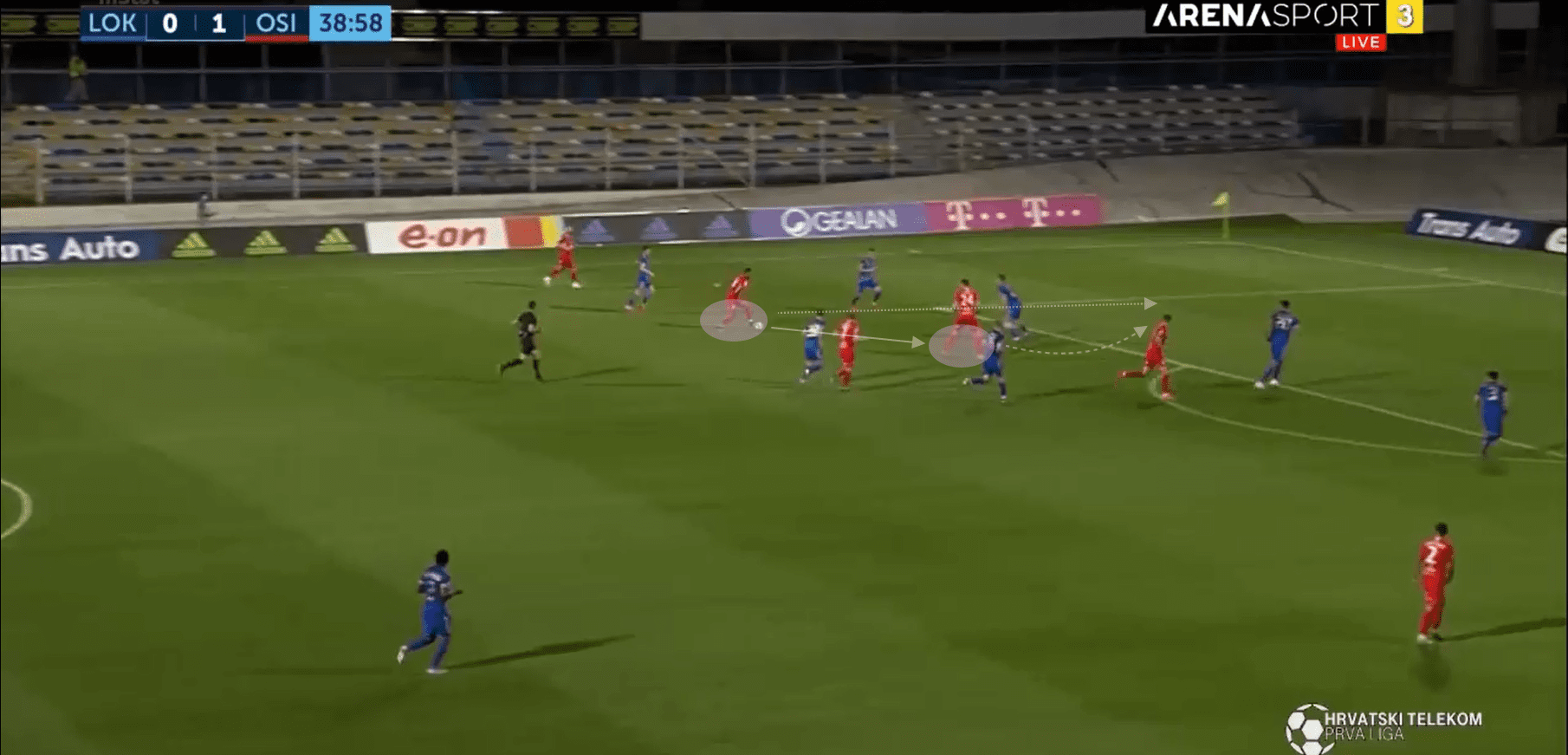
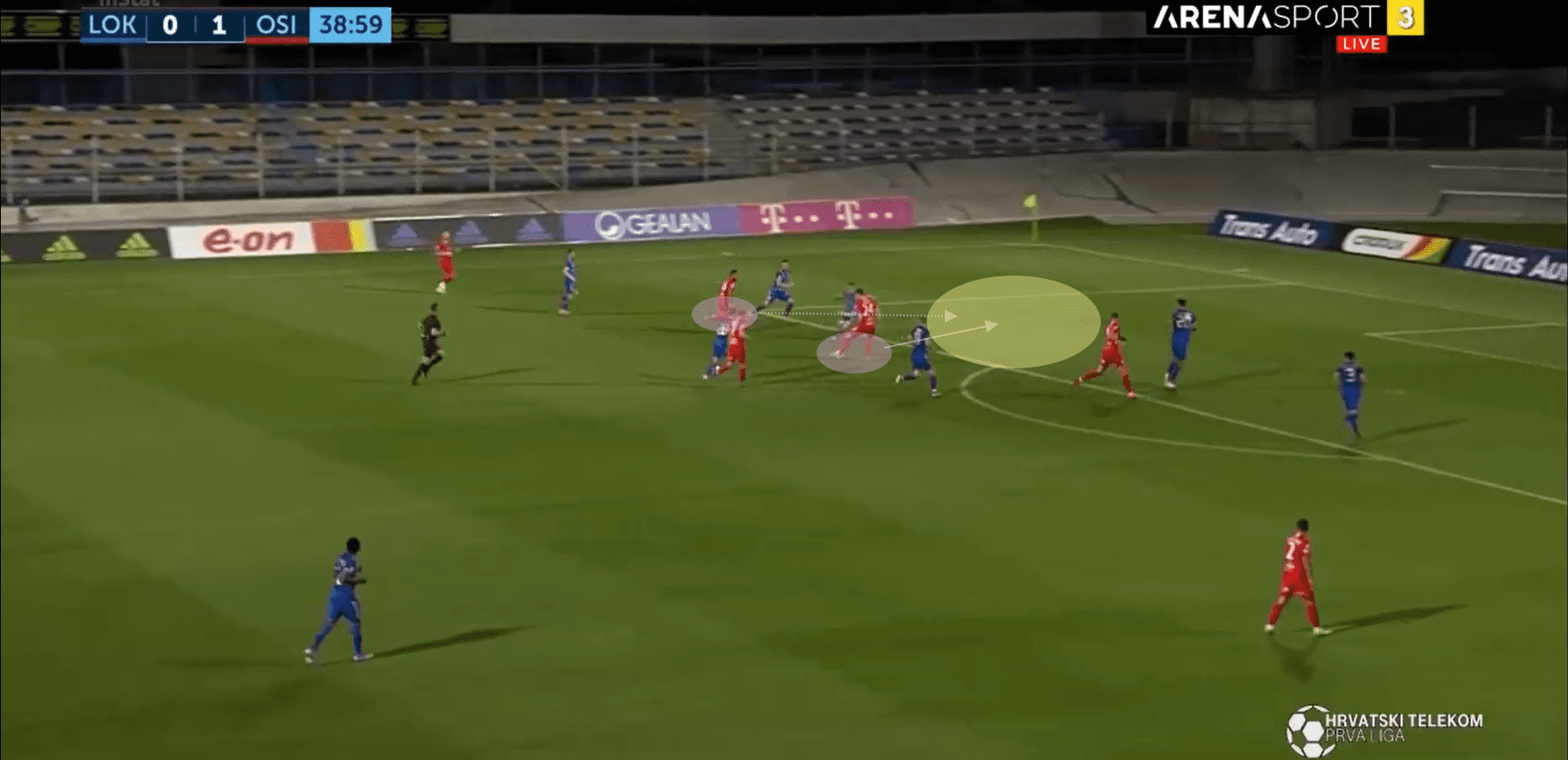
In the example above we can see how Marić separates himself from his marker to create space and receive the ball. When Talys attempts to pass towards Marić, he continues his run into open space, and Marić recognises that space behind the defence and plays a first-touch pass which gets Talys into a good chance.
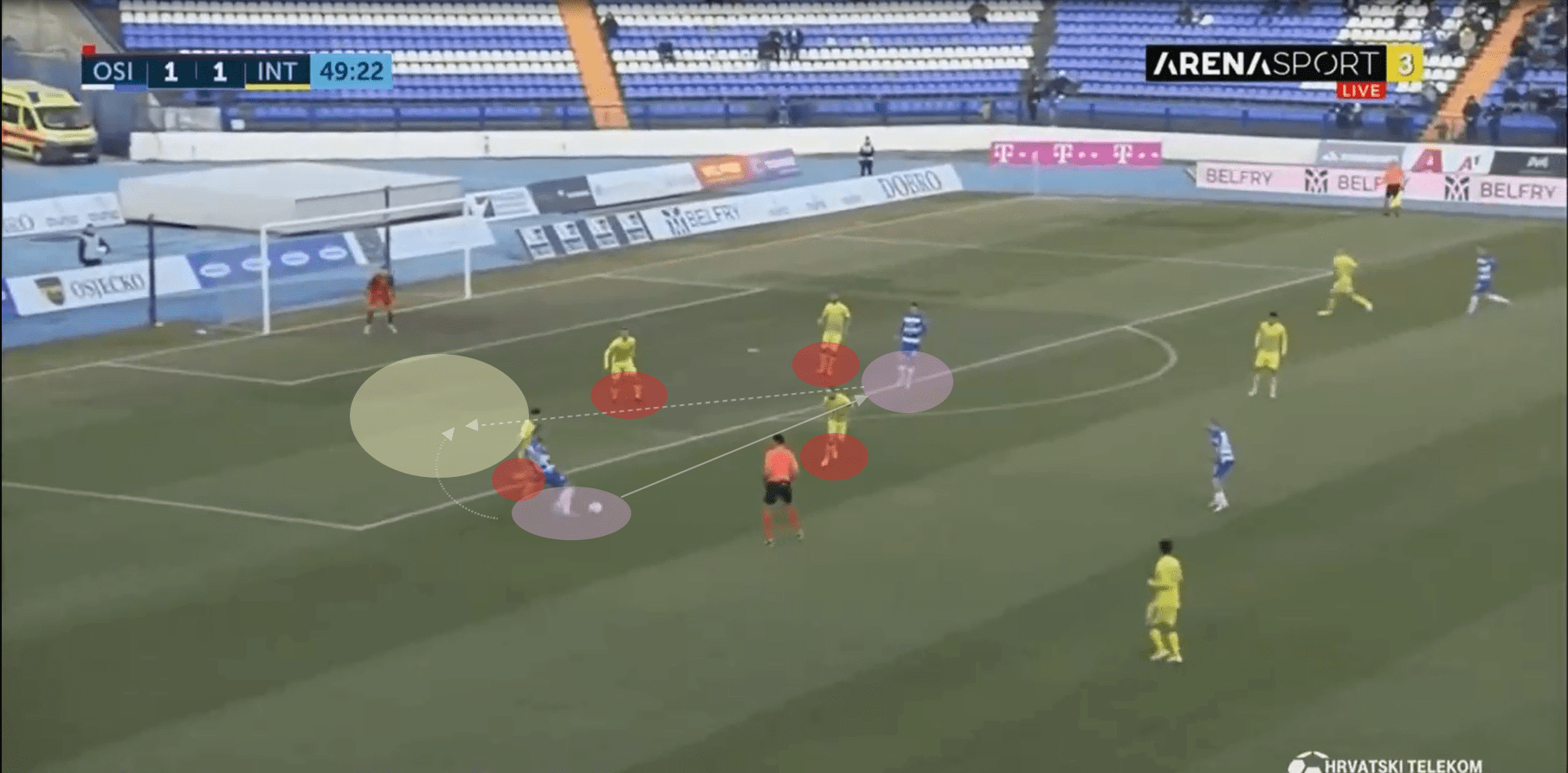
Above is another example of Marić’s impact in the final third. He opens his body to receive the pass from Grezda on the edge of the penalty area and then plays it first-touch behind the defence, which leads to a shot. The quality of Marić made a difference in this sequence even if the opponent had a numerical advantage.
Marić’s skillset includes vision as well and he often tries to find teammates in open spaces. The example below will show the situation where Marić’s creativity is on point.
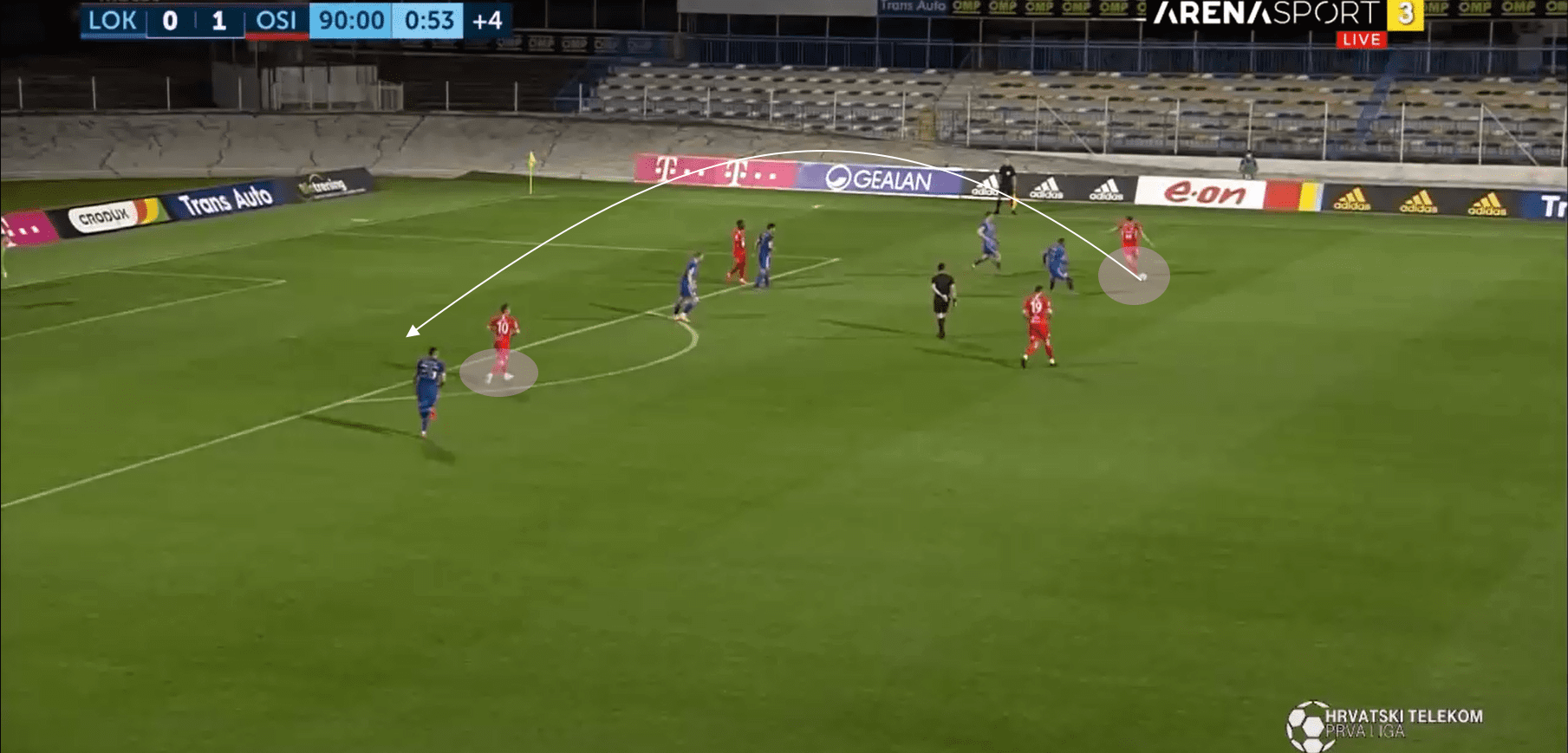
Marić sees space behind the defensive line and chips the ball into the penalty area, creating a clear-cut chance for Lopa. That is one of the advantages of having Marić as he can drop deep and draw opponents’ defenders out of their position, which opens space for wingers and midfielders to run into.
Off the ball movements
One of the things which really shows Marić’s football intelligence is his off the ball movement and anticipation. Not only can he serve as a good option in link-up play, but he also likes to run in behind or drift wide as well in order to receive the ball. I will use a situation from Osijek’s last match against Gorica, where Marić scored a great chipped goal after a perfectly timed run behind the opponent’s defence.
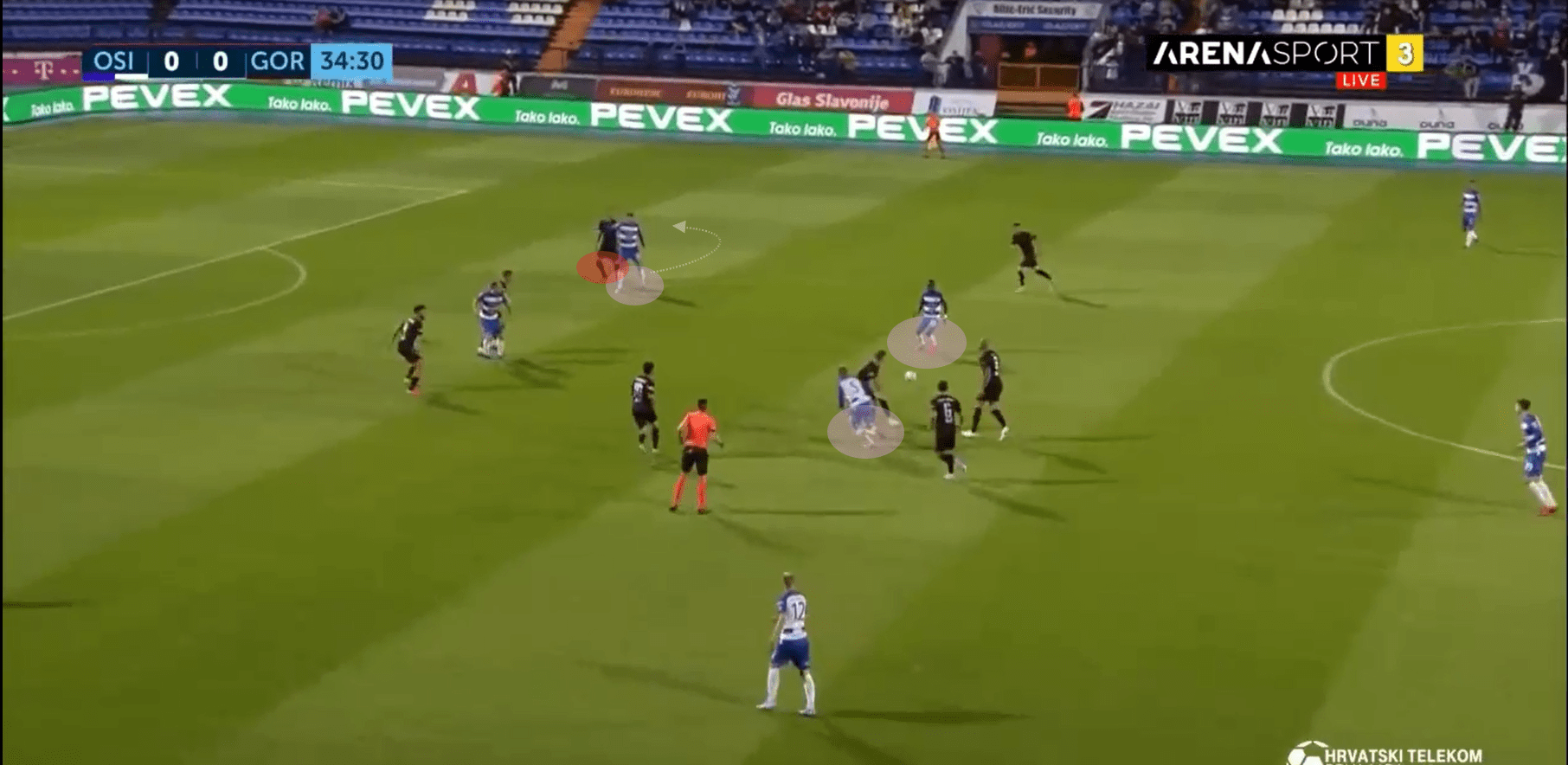
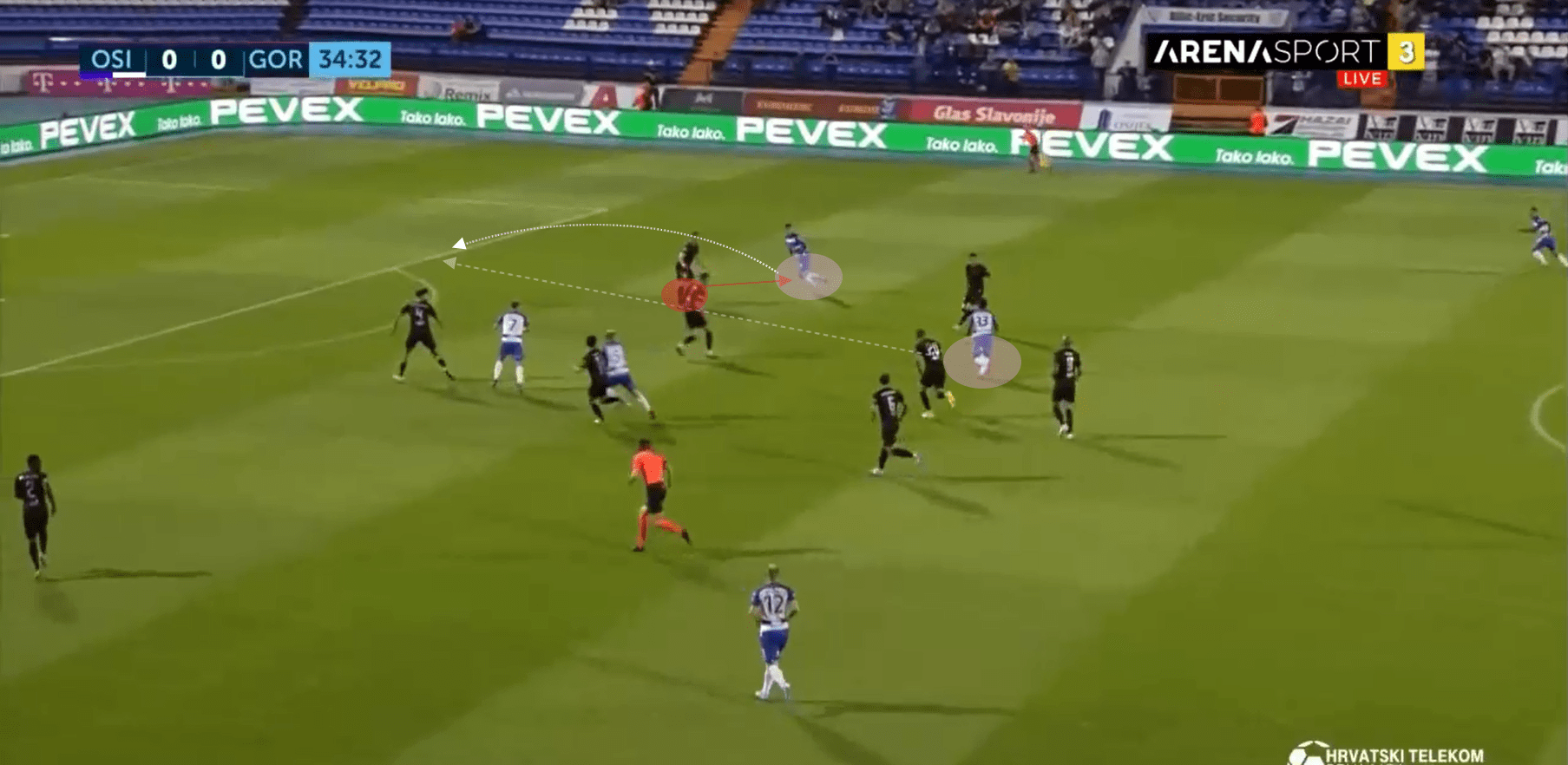
The first frame shows a situation where Kleinheisler plays the ball to Ndockyt, and as soon as this happened, Marić was already close to Gorica’s central defender. When Marić saw Ndockyt is receiving the ball, he instantly made a few steps backwards to draw the defender to him and that opened a passing lane for Ndockyt’s through ball into the open space. Marić’s timing was perfect and with his weaker foot, he chipped the goalkeeper. Praise should also go to Ndockyt as well cause he made a fantastic pass, but Marić’s slow movement backwards and then acceleration into open space is what you want from your forwards.
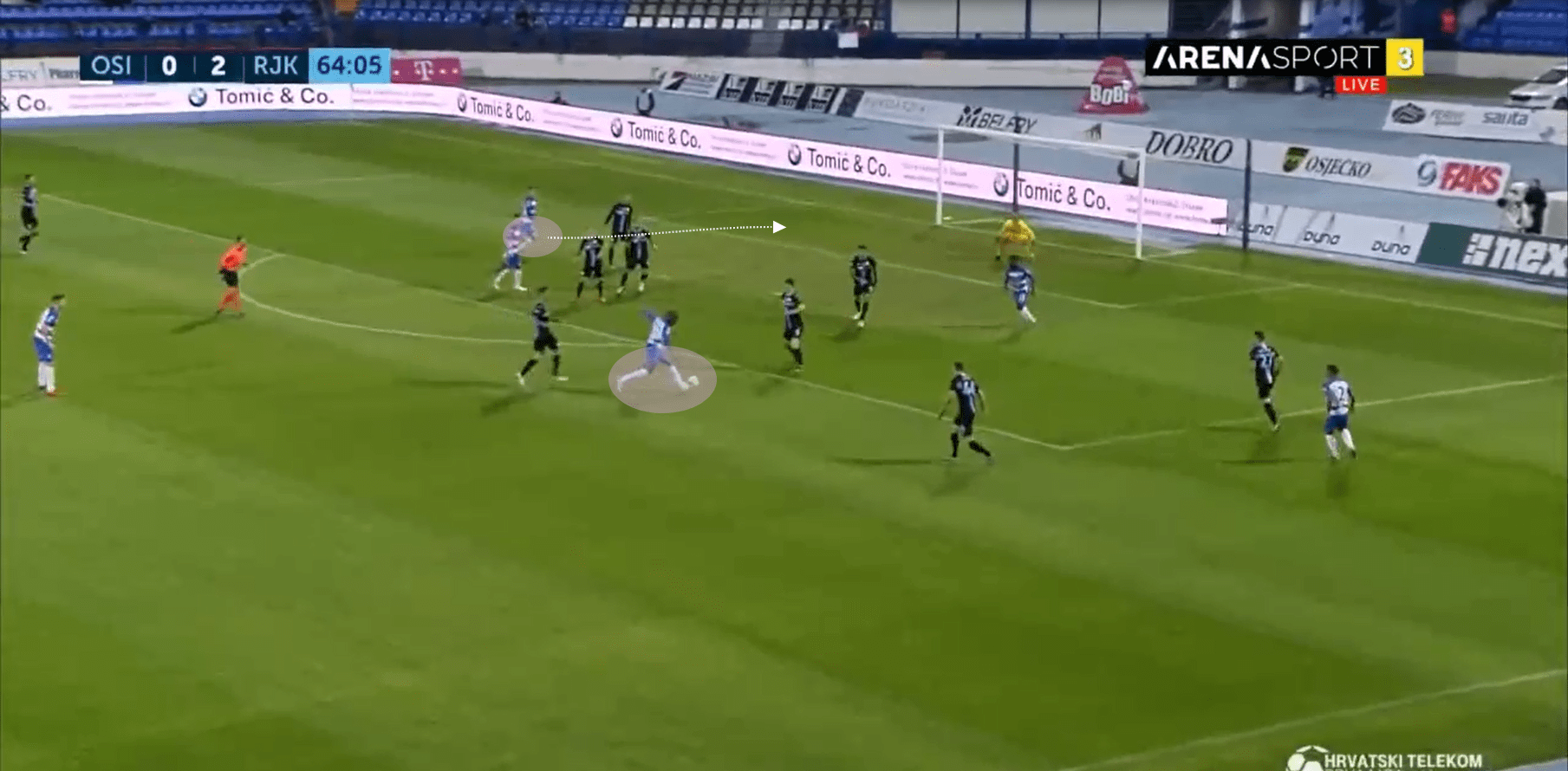
To display Marić’s anticipation I chose the situation above. In the image, it is easy to assume that Mbakogu is going to shoot. Marić has that sense for goal and his anticipation is on point in this situation because Mbakogu’s shot goes directly into the space where Marić made his run. It ends as an easy tap-in for Marić because the opponent’s defence froze and he took advantage of that and Mbakogu’s miskicked shot.
Weakness
For a tall centre forward like Marić, it is hard to overlook his offensive aerial ability. He didn’t score any headers this season and he had some good opportunities to do so. Because of his frame, it is possible for him to improve in this area of his game. What he has to do is to work on his positioning when a cross or long ball is attempted and have better timing of the jump. Out of 6.13 aerial duels per 90, Marić wins only 33.7% of them.
To compare him to some other forwards who are about the same height, Komnen Andrić from Inter Zaprešić wins 40.82% of his 7.87 aerial duels per 90, but a player who is really impressive in the air is Gedeon Guzina from Istra who wins 44.7% of his 14.01 aerial duels per 90. If Marić moves to a higher-level league, he will need to improve this part of his game to be a threat in the air as well.
Conclusion
Watching Osijek week in and week out, Marić is always dangerous, gets into chances and creates good opportunities for his teammates as well. Because of the weakness I mentioned, I can’t see him play in the Premier League because he is not the calibre for top-half teams and mid-table teams while bottom-half teams play a lot of long balls and attempt a lot of crosses. I can see him play in La Liga in the future and he currently has the ability to play at top teams outside the top five leagues.
Next week Domagoj Kostanjšak is going to write an analysis on Hajduk Split, so stayed tuned!





Comments